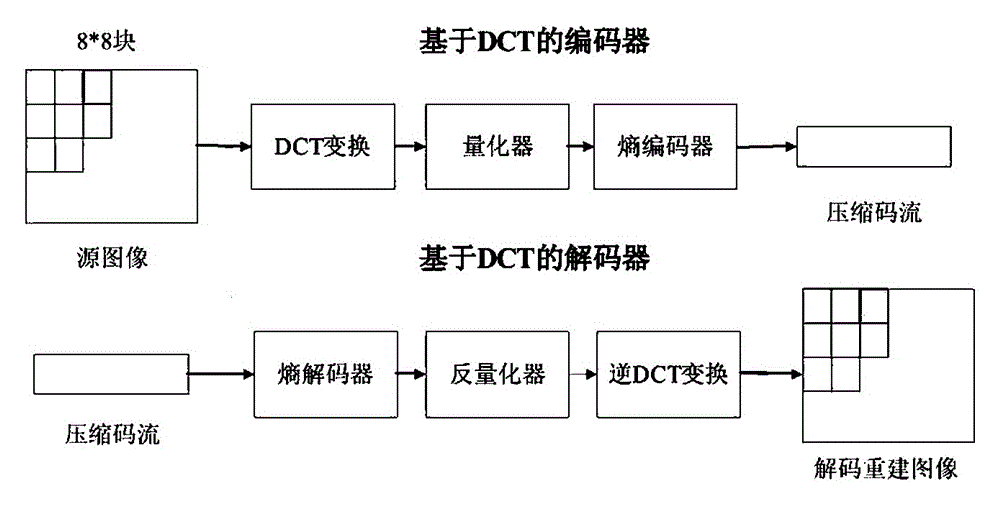CS-based image optimized decoding method
A decoding method and image technology, which is applied in the field of CS-based image optimization decoding, can solve problems affecting image quality, fixed decoding methods, and ineffective equipment, etc.
- Summary
- Abstract
- Description
- Claims
- Application Information
AI Technical Summary
Problems solved by technology
Method used
Image
Examples
Embodiment 1
[0047] Example 1: Verifying CS-based image optimization decoding effect:
[0048] A large number of tests were conducted using commonly used 256*256 standard test images such as Lena and Cameraman. After using the JPEG encoder to encode different test images, for the inverse quantized DCT transform coefficients corresponding to each 8*8 image block obtained at the decoder, use the inverse DCT transform of the standard JPEG decoder and the reconstructed coefficient based on CS optimization. The decoding scheme performs decoding and reconstruction, and compares the reconstructed images. For solving the TV minimization optimization problem, there are a variety of existing solution methods, such as L1magic proposed by Candes et al., and different reconstruction algorithms can be selected according to different optimization reconstruction models, which also reflects that our proposed scheme can be independent Advantages of flexible decoding on the encoding side. In order to balan...
Embodiment 2
[0051] Embodiment 2: verifying the optimized decoding effect based on image block merging based on CS optimized decoding. On the premise of not changing the JPEG encoding, the obtained dequantized transformation coefficients corresponding to the original 8*8 image blocks are merged into corresponding transformation coefficients of larger image blocks at the decoding end for reconstruction. For example, four 8*8 image blocks are merged into a 16*16 image block, and 16 8*8 image blocks are merged into a 32*32 image block. Block merging can further improve the quality of the reconstructed image at the decoding end, and can Flexible selection of the merged image block size. The PSNR comparison experiment results of the reconstructed image are shown in Table 2. Compared with the original JPEG decoding, the CS optimized decoding using 16*16 block merging and 32*32 block merging has an average improvement of 0.45db and 0.51db respectively, and the Peppers image can be the highest. G...
Embodiment 3
[0054] Example 3: Verification of the CS-optimized decoding runtime for block merging of different sizes.
[0055] CS-based optimized decoding converts the inverse transformation in decoding into a convex optimization problem, and an optimization solution is required in the reconstruction process of each image block, while the convex optimization solution in CS is currently solved iteratively, which has a high operational complexity. Therefore, the present invention has the disadvantage of high computational complexity. However, with the rapid development of hardware computing speed today, and with the proposal of various efficient and robust CS optimization algorithm, this problem can be well made up. At the same time, experiments show that the CS optimized decoding using block merging can not only obtain higher quality reconstructed images than the original CS optimized decoding, but also greatly reduce the decoding and reconstruction time. The hardware platform of the exp...
PUM
 Login to View More
Login to View More Abstract
Description
Claims
Application Information
 Login to View More
Login to View More - R&D
- Intellectual Property
- Life Sciences
- Materials
- Tech Scout
- Unparalleled Data Quality
- Higher Quality Content
- 60% Fewer Hallucinations
Browse by: Latest US Patents, China's latest patents, Technical Efficacy Thesaurus, Application Domain, Technology Topic, Popular Technical Reports.
© 2025 PatSnap. All rights reserved.Legal|Privacy policy|Modern Slavery Act Transparency Statement|Sitemap|About US| Contact US: help@patsnap.com



